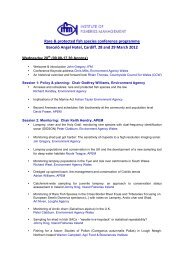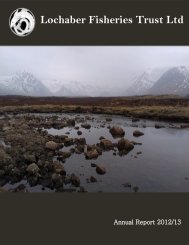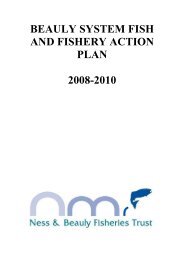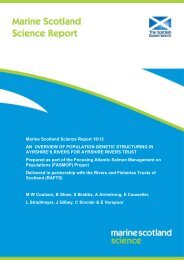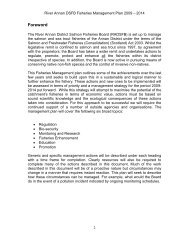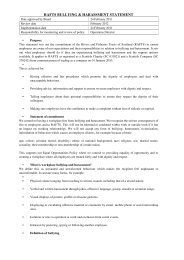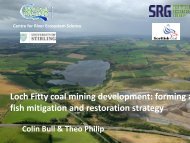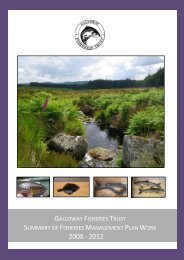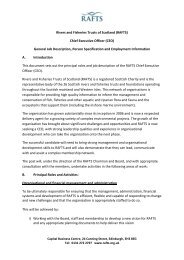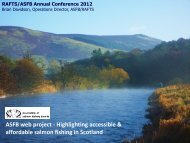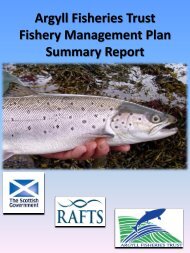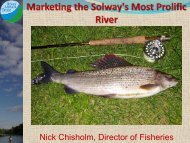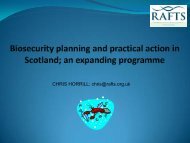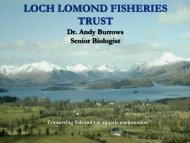You also want an ePaper? Increase the reach of your titles
YUMPU automatically turns print PDFs into web optimized ePapers that Google loves.
Lead BodiesScientific research is a core role for the River <strong>Don</strong> Trust and so the RDT will be leadingthe habitat surveys. As discussed there is merit in also training <strong>Don</strong> DSFB staff in themethod so that efficient use of resources can be made.Future WorkAreas of the catchment identified for improvement works, whether instream works, suchas rubble mat addition, or riparian works, such as fencing and buffer strip creation or treeplanting, can be prioritised when the habitat survey has been considered in conjunctionwith electric fishing and other data. This should be based on factors such as thoseconsidered in the River Dee Trust’s 2008 report “Prioritisation of Habitat Restorationbased upon the 1999 River Dee Habitat Survey and Subsequent Updates”:Feasibility of the restoration workSeverity of the impactPotential increase in fish production following restorationImpact on vulnerable components of the fish stock e.g. spring salmonCost of implementing restoration work.Once work has been prioritised detailed surveys of the tributaries in question can becarried out to produce project plans fully costed to the type of improvements required.Application can then be made to the Scottish Rural Development Programme forassistance and consultation with the local landowners to ensure their needs are met.Future revisions of the <strong>Fishery</strong> <strong>Management</strong> <strong>Plan</strong> for the river will encompass these plansand the subsequent monitoring to quantify their success.4.2.2 Electric Fishing SurveysSurvey PurposeWidespread electric fishing is required to establish baseline data as to which species arecurrently present, their abundance and extent across the <strong>Don</strong> catchment. Due to theimportance of the salmonid fisheries on the <strong>Don</strong>, electric fishing will primarily be aimedat these species. Other fish species encountered shall be recorded in full detail in orderthat future investigations can be targeted, perhaps using additional methods. Targeteddata collection on species of conservation importance, such as eels or lampreys may bepossible through collaborations with SNH.Survey MethodElectric fishing on the <strong>Don</strong> catchment will be carried out in accordance with the trainingand methods of the Scottish Fisheries Co-ordination Centre (SFCC).The Time Delineated Method will be used in order that:• The whole of the catchment can be surveyed, including wadeable areas of widemainstem waters• Overall trends in relative fish abundance, rather than exact fish numbers, can bedetermined20



